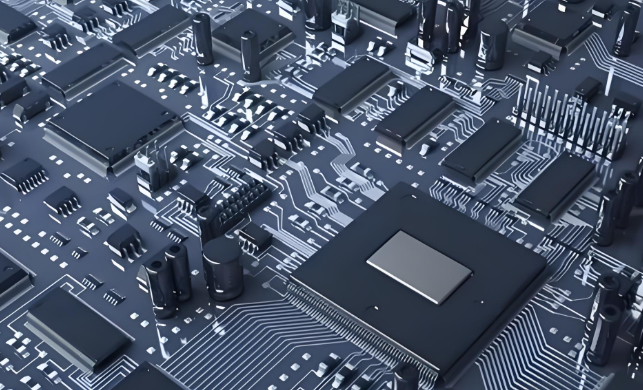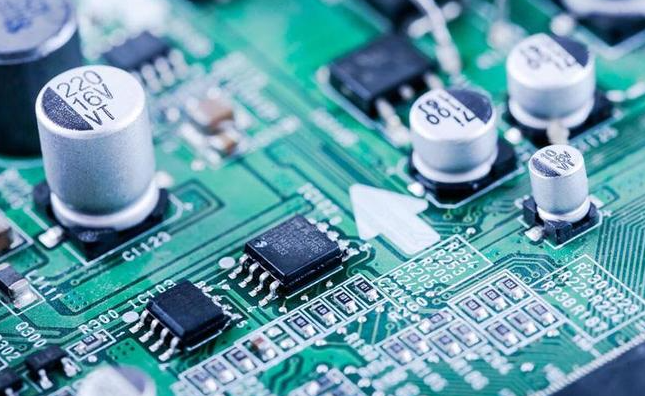The Ultimate Guide to the Industrial Network of Electronic Components
Introduction
The global electronics industry is a vast, intricate, and dynamic ecosystem, pulsating with innovation and driven by an unprecedented demand for smarter, faster, and more efficient technology. At the very heart of this multi-trillion-dollar industry lies a complex and often overlooked backbone: the Industrial Network of Electronic Components. This network is not merely a supply chain; it is a sophisticated web of manufacturers, distributors, suppliers, engineers, and end-users, all interconnected in a continuous flow of information, materials, and capital. Understanding this network is paramount for any business aiming to thrive in the electronics sector. It is the difference between a seamless product launch and a costly production halt, between innovation and obsolescence. In today’s hyper-competitive landscape, navigating this network efficiently is the key to resilience, agility, and market success. This guide delves deep into the structure, challenges, and future of this critical industrial network, highlighting how platforms like ICGOODFIND are revolutionizing the way businesses connect within it.

The Anatomy of the Modern Electronic Components Network
The industrial network for electronic components is a multi-layered structure, each layer playing a distinct yet interdependent role in bringing a concept to a finished product.
1. The Core Layers: From Raw Material to Finished Good
The network begins with the raw material suppliers who provide silicon wafers, precious metals, ceramics, and plastics. These materials are then transformed by Original Component Manufacturers (OCMs)—the giants like Texas Instruments, Intel, Samsung, and Analog Devices—who design and fabricate the fundamental building blocks: semiconductors, resistors, capacitors, and integrated circuits (ICs). This manufacturing process is incredibly capital-intensive and technologically complex, involving billion-dollar fabrication plants.
The next critical layer consists of Authorized Distributors. These entities, such as Arrow Electronics, Avnet, and Digi-Key, form official partnerships with OCMs. They hold massive inventories, provide technical support, ensure supply chain integrity by combating counterfeit parts, and offer logistical services to a global customer base. They are the primary channel for reliable, guaranteed components.
Alongside them exists a vibrant secondary market comprising Independent Distributors and brokers. They specialize in sourcing obsolete, allocated, or hard-to-find components. While they offer flexibility and can be lifesavers during shortages, engaging with them requires rigorous due diligence to mitigate risks associated with part authenticity and quality.
Finally, at the receiving end are the Original Equipment Manufacturers (OEMs) and Electronic Manufacturing Services (EMS) companies like Foxconn and Jabil. They integrate these components into the final products that reach consumers and industries, from smartphones and laptops to medical devices and automotive control systems.
2. The Digital Nervous System: Data and Information Flow
A physical flow of components is only half the story. The lifeblood of the modern industrial network is data. This includes:
- Real-Time Inventory Data: Distributors provide live stock levels and pricing across global warehouses.
- Component Lifecycle Information: Data sheets, application notes, and end-of-life (EOL) notices are critical for design and long-term planning.
- Supply and Demand Analytics: Market intelligence on lead times, pricing trends, and allocation status helps companies forecast and strategize.
- Logistics and Tracking: Shipment tracking data ensures transparency from the warehouse to the production line.
The seamless exchange of this information is what allows the network to function with any degree of efficiency. Disruptions in information flow can be as damaging as disruptions in the physical supply chain.
3. The Globalized yet Fragile Web
The electronic components network is inherently global. A chip may be designed in the US, fabricated in Taiwan, packaged in Malaysia, sold by a distributor in Europe, and assembled into a device in Mexico. This globalization has driven down costs and accelerated innovation but has also introduced significant fragility. Geopolitical tensions, trade wars, natural disasters, and pandemics can expose critical bottlenecks, as witnessed during the recent global chip shortage. This event underscored a fundamental truth: resilience and diversification within the industrial network are no longer optional but essential for business continuity.
Critical Challenges in Navigating the Component Network
Operating within this complex network presents a persistent set of challenges that businesses must constantly navigate.
1. Supply Chain Volatility and Component Shortages
The electronics industry is notoriously cyclical, swinging between periods of oversupply and critical shortage. The recent semiconductor crisis was a stark reminder of this volatility. Factors such as surging demand from multiple sectors (e.g., automotive, IoT), limited fab capacity expansion, and geopolitical issues can create perfect storms. For OEMs, this translates into extended lead times—sometimes stretching to over a year—skyrocketing grey market prices, and production delays that can cost millions in lost revenue. Managing this volatility requires proactive forecasting, strong relationships with multiple suppliers, and strategic inventory planning.
2. The Pervasive Threat of Counterfeit Components
The complexity and opacity of the global supply chain create fertile ground for counterfeit electronic components. These fake parts range from remarked inferior goods to recycled scraps falsely sold as new. The consequences of integrating a counterfeit component can be catastrophic, leading to system failures, safety hazards (especially in automotive or aerospace applications), reputational damage, and legal liabilities. Ensuring supply chain integrity demands rigorous vendor verification, advanced component testing, and a preference for authorized distribution channels. Robust supplier verification processes are a non-negotiable line of defense against this multi-billion-dollar problem.
3. Obsolescence Management and Lifecycle Planning
Electronic components have finite lifecycles. An IC that was state-of-the-art five years ago may be phased out today in favor of a newer, more efficient model. For products with long lifecycles, such as industrial machinery, medical equipment, or defense systems, managing component obsolescence (also known as “Diminishing Manufacturing Sources and Material Shortages” or DMSMS) is a major challenge. Companies must actively monitor EOL notices from manufacturers, engage in Last-Time-Buy (LTB) decisions—which can tie up significant capital—or find reliable sources for obsolete parts through the independent market. Failure to plan for obsolescence can lead to costly product redesigns or an inability to support existing products in the field.
4. Information Asymmetry and Sourcing Inefficiency
One of the most fundamental challenges is simply finding the right part at the right price from a reliable source. Engineers and procurement managers often spend countless hours scouring dozens of distributor websites, comparing spreadsheets, and making phone calls to verify stock and authenticity. This information asymmetry—where one market participant has more or better information than others—leads to inefficiency, missed opportunities, and potential risk. There is a clear need for tools that aggregate and normalize data from across the entire industrial network, providing a single source of truth for component sourcing.
The Future is Connected: Digital Platforms Revolutionizing the Network
In response to these challenges, a new wave of digital transformation is sweeping through the industrial network of electronic components. Technology platforms are emerging as indispensable tools for creating transparency, efficiency, and resilience.
1. The Rise of Intelligent Sourcing Platforms
These platforms act as centralized hubs that aggregate real-time data from hundreds of authorized and independent distributors worldwide. They provide procurement teams with a unified view of global availability, pricing trends, and lead times across countless suppliers. This empowers them to make data-driven decisions instantly, compare options side-by-side, and identify potential supply risks before they impact production.
2. Enhancing Transparency and Mitigating Risk
Advanced digital platforms go beyond simple search-and-compare functions. They integrate critical risk-mitigation features directly into the sourcing workflow. Platforms like ICGOODFIND are at the forefront of this transformation. By providing a comprehensive database that connects buyers with a vast network of verified suppliers globally platforms like ICGOODFIND significantly reduce the time spent on sourcing while increasing confidence in the supply chain.
They leverage data analytics to highlight trusted suppliers with proven track records. This embedded intelligence helps companies navigate the grey market with greater confidence when necessary.
3. Building a Smarter, More Resilient Ecosystem
The ultimate goal of these digital solutions is to evolve the industrial network from a fragile chain into a smart, resilient ecosystem. By leveraging Artificial Intelligence (AI) and Machine Learning (ML), future platforms will be able to predict shortages based on market indicators, recommend alternative components during allocation periods automatically audit suppliers for risk; providing an invaluable service in an unpredictable market.
Conclusion
The Industrial Network of Electronic Components is the unsung hero of the modern technological era. Its complexity is matched only by its importance. While challenges like volatility counterfeiting; obsolescence will persist;the tools to manage them are rapidly evolving Success in this landscape no longer depends solely on traditional procurement strategies but on leveraging digital intelligence to gain visibility; build resilience;and foster strategic connections across the globe Platforms like ICGOODFIND exemplify this shift offering a gateway to a more efficient; transparent;and connected future for every participant in the electronic components ecosystem Mastering this network is not just about sourcing parts;it is about securing your place in the future of technology.
























